Years before we knew how to spell “coronavirus,” I gained Italian citizenship while retaining my U.S. citizenship. My family’s plan was to, soon thereafter, split time for work and life between the U.S. and the E.U.
Then, COVID-19 emerged as a pandemic the world over, and the move to Brussels in January 2020 was quite short-lived.
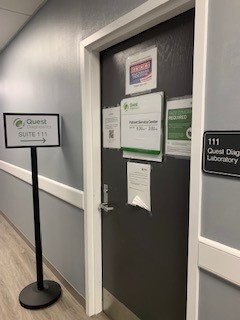 Now, the plan is in play and I’m writing this post from our home in Brussels, Belgium. Why Brussels? Among many smart reasons, the city is welcoming, our farm-to-table food style is doable, the walkability is brilliant, and the transportation options are accessible to places we need to go to work — fast trains to Paris, London, Amsterdam, and a good airport with connections to other European cities where we see clients.
Now, the plan is in play and I’m writing this post from our home in Brussels, Belgium. Why Brussels? Among many smart reasons, the city is welcoming, our farm-to-table food style is doable, the walkability is brilliant, and the transportation options are accessible to places we need to go to work — fast trains to Paris, London, Amsterdam, and a good airport with connections to other European cities where we see clients.
I wanted to share this news and my view of the travel work-flow I experienced on Friday 1st October, the date of my overnight flight over to BRU airport from Newark Liberty International airport.
But due to Belgium’s requirements for passengers traveling from “red zone” countries, the travel journal must start some days before the actual flight time.
You will find this a story of public health, a nation’s responsible approach to treating citizens’ personal data responsibly and privately based on the GDPR regulation, good design baked into consumer experience and digital health tools, health literacy and patient education, and an airline collaborating across industry sectors to “connect the world safely.” And in full disclosure right up-front, let me say that I paid for my airline ticket on United Airlines — and have received no compensation from either the airline or any other organization for writing this up.
The United States is currently considered a “red zone” — a country at high-risk for COVID transmission. It takes some paperwork, testing, and information uploading and computer entry to build up a dossier that enables one to fly into Belgium. I’ll add that, although the EU is a “union,” each member-state has its own approach to managing the coronavirus with different requirements for paperwork, testing, quarantining, and other strategies to keep the virus from spreading via international travelers.
I was scheduled to fly via United Airlines, and I commend the company’s Travel Ready Center portal for enabling me to first understand Belgium’s requirements (personalized for “me” as an EU citizen coming from the U.S.), and second, providing me various instructions for traveling to Belgium, links to forms to complete before arriving at the airport, and a COVID-19 section for information and testing logistics.
The portal informed me that my COVID-19 test had to be done within 72 hours of the flight departure time. United Airlines has struck agreements with several labs and pharmacies to schedule passengers for their tests. The system worked perfectly, streamlining me from the Travel Ready Center COVID-19 home page linking me to a scheduling app that asked for my U.S. ZIP code, then linking me to nearby testing sites with whom United had agreements. I chose to go this route because I had greater assurance that my test result would be “interoperable” with United’s system, thereby ensuring even if I didn’t upload my (hopefully negative) result before I left for the airport, United authorities would receive it. My test was scheduled at a nearby Quest Lab, shown in the photo here prior to my 630 am appointment for my swab-test. I was a bit nervous about the 630 am timing being too soon for the Friday night flight at 650 pm, but because this came through the United system, I had trust that it would work.
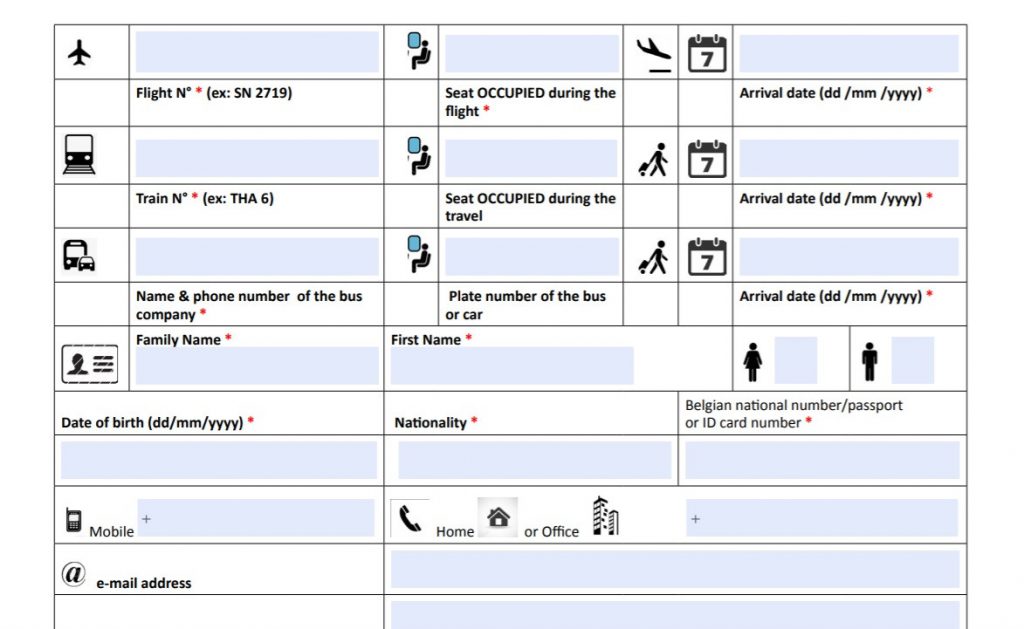 Next workflow for me, the passenger, was to complete a passenger arrival form furnished by the Belgian government. Every passenger traveling to the country is compelled to fill out the details in this form, which includes the flight number, seat location, and arrival date, along with a mobile phone number and local address in Belgium where one was staying (especially key for potential quarantine needs). Note the inclusion of the seat occupied on the plane; this allows the public health authorities to track and trace and contact passengers who might have been seated near another traveler who develops a positive COVID diagnosis.
Next workflow for me, the passenger, was to complete a passenger arrival form furnished by the Belgian government. Every passenger traveling to the country is compelled to fill out the details in this form, which includes the flight number, seat location, and arrival date, along with a mobile phone number and local address in Belgium where one was staying (especially key for potential quarantine needs). Note the inclusion of the seat occupied on the plane; this allows the public health authorities to track and trace and contact passengers who might have been seated near another traveler who develops a positive COVID diagnosis.
I also uploaded my CDC COVID-19 vaccine card, scanned on my home printer then shared on the United Travel Ready portal along with this form, which generated a QR code I was to print out and carry to my flight. This form was subsequently reviewed by United Airlines check-in staff along with my passport to allow me to fly to or through Belgium. Even passengers transferring from the Brussels airport to other planes and destination had to complete this form.
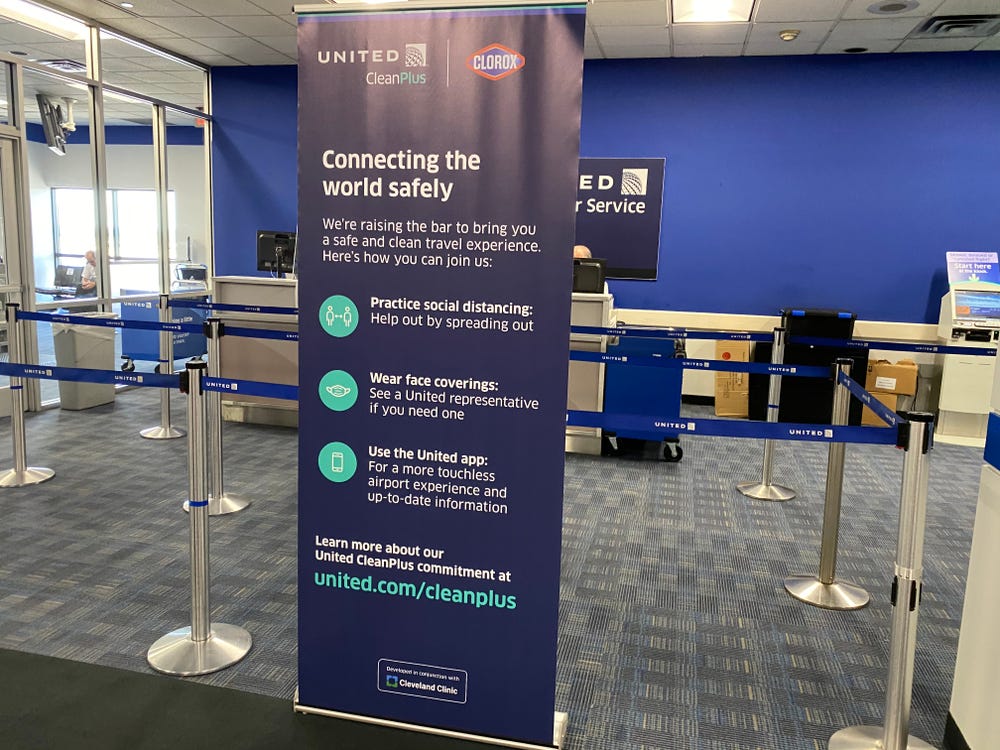 Once past check-in, I checked out the United Club to relax a while before my flight. Only one club space was open and it was like Hunger Games seeking a distanced place to sit and work. I was fortunate to spot just the place with which I was comfortable, COVID-wise, and spotted this sign alerting passengers to United’s alliance with Clorox to “connect the world safely.”
Once past check-in, I checked out the United Club to relax a while before my flight. Only one club space was open and it was like Hunger Games seeking a distanced place to sit and work. I was fortunate to spot just the place with which I was comfortable, COVID-wise, and spotted this sign alerting passengers to United’s alliance with Clorox to “connect the world safely.”
As it turns out, Clorox was one of the fastest-growing brands in the pandemic, along with gaining a lot of consumer trust equity based on several studies. I detailed the CleanPlus program that united United Airlines, Clorox, and the Cleveland Clinic relatively early in the pandemic, and this program is part of a larger hospitality industry effort to bolster public confidence in getting back to air travel, hotels, resorts, and other forms of tourism.
Even so, once boarding the flight, I noticed several passengers using their own carried-on hygiene wipes to clean off their seats, tables, media monitors, to give them added assurance of hygiene in their private spaces.
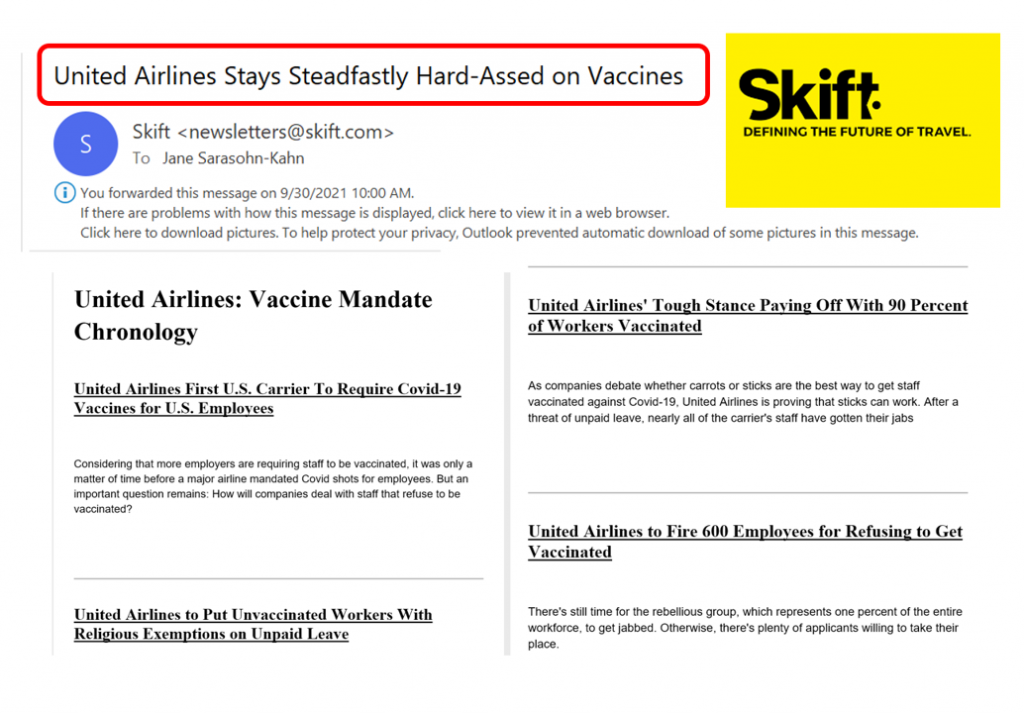 Most importantly, all passengers and crew wore masks through the entire flight, taking them down just for eating and sipping. I’ll also note that United Airlines has been termed a “hard-ass” by the Skift travel newsletter when it comes to compelling its employees to be vaccinated, another important aspect of giving travelers confidence to travel by air via United Airlines.
Most importantly, all passengers and crew wore masks through the entire flight, taking them down just for eating and sipping. I’ll also note that United Airlines has been termed a “hard-ass” by the Skift travel newsletter when it comes to compelling its employees to be vaccinated, another important aspect of giving travelers confidence to travel by air via United Airlines.
The day I arrived, I received two text messages from the COVID government authority sending me a “prescription code” for a free COVID-19 test, paid-for by the government and required for tracing and tracking incoming travelers to Belgium. Because I had had a negative COVID test within 72 hours of flying into the country, and I was fully vaccinated, I was not compelled to take the test on Day 1. However, all travelers from the red zone are still required to take a COVID-19-test 7 days after arrival, and the cost of this test, too, is covered by the Belgian government. So I will head to a testing center over the weekend to get that test done.
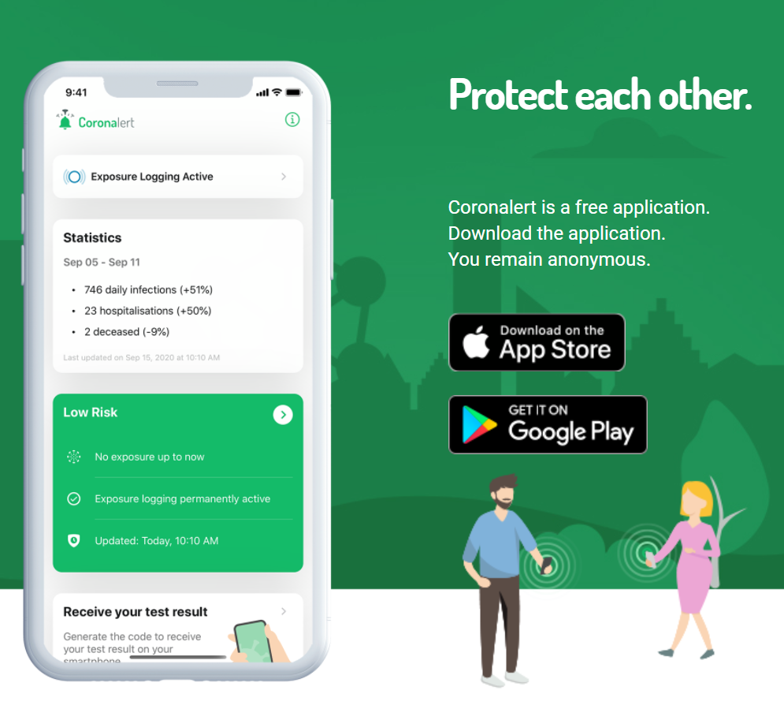
My Belgian public health friend (who, while Flemish, spoke perfect English with me on the phone) then suggested I download two apps to my smartphone: the CovidSafe app and the CoronAlert app.
The CovidSafe tool is the “home” for a health citizen’s QR code with her COVID vaccination certificate which allows a person to travel freely within the European Union. In addition to the vaccination information, the app also can house a test certificate attesting to a negative COVID-19 test as well as a “recovery certificate” that shows a patient has recovered from the coronavirus after a previous positive test.
The Coronalert app can warn someone who has been in close contact with another person who tested positive for COVID-19, anonymously, inform the user on how to protect themselves and others, and anonymously notify other Coronalert users with whom we might have had close contact if we are tested positive for the virus.
My public health worker then asked if I had received the testing “prescription codes” via text and I assured him I did, and knew where the center for the test would be for me.
After finishing up his questions, we bid each other farewell.
This phone call was very reassuring to me, bolstering the public health message of being safe for me and safe for others around me.
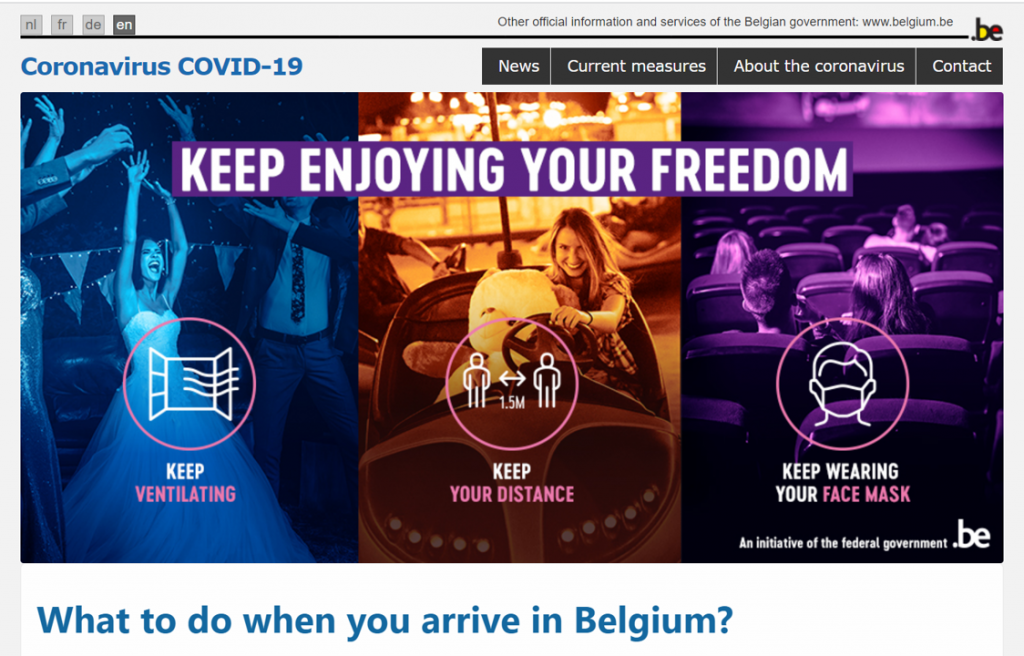 Health Populi’s Hot Points: The messaging of the Belgian public health effort is to enjoy your freedom and protect each other, illustrated by the country’s Coronavirus COVID-19 website captured here.
Health Populi’s Hot Points: The messaging of the Belgian public health effort is to enjoy your freedom and protect each other, illustrated by the country’s Coronavirus COVID-19 website captured here.
From a health citizen’s point-of-view, the messaging of “keep ventilating, keep your distance, and keep wearing your face mask” is clear and well-designed — in this instance, focusing images on younger people.
Over the past 48 hours, since arriving in Brussels, I’ve ridden on public transportation, both tram and subway, shopped at retail for groceries and home goods, and walked some miles (metres!) on the streets of my neighborhood and adjacent areas.
The vast majority of people, younger and older, men and women, across the ethnic/color spectrum, are wearing masks indoors and many walking out-of-doors as well.
The feeling is communal and civil in the best possible ways.
I’ll be working from Brussels for the remainder of the year until the December holidays. Stay tuned for my further reports as a health citizen of Europe and the U.S., through the usual Health Populi lens of people + technology + health. I’ll continue to be working with my clients in the U.S. and spending more face-to-face time with my clients in the EU and in the UK.
Wishing you well, hoping you find your own hygienic, healthy, safe life-flows wherever you live and work and play and pray.
The post Crossing the Pond by Plane in the Age of Corona – My View From the Hygienic Skies and on the Ground in Belgium appeared first on HealthPopuli.com.
Crossing the Pond by Plane in the Age of Corona – My View From the Hygienic Skies and on the Ground in Belgium posted first on https://carilloncitydental.blogspot.com
No comments:
Post a Comment